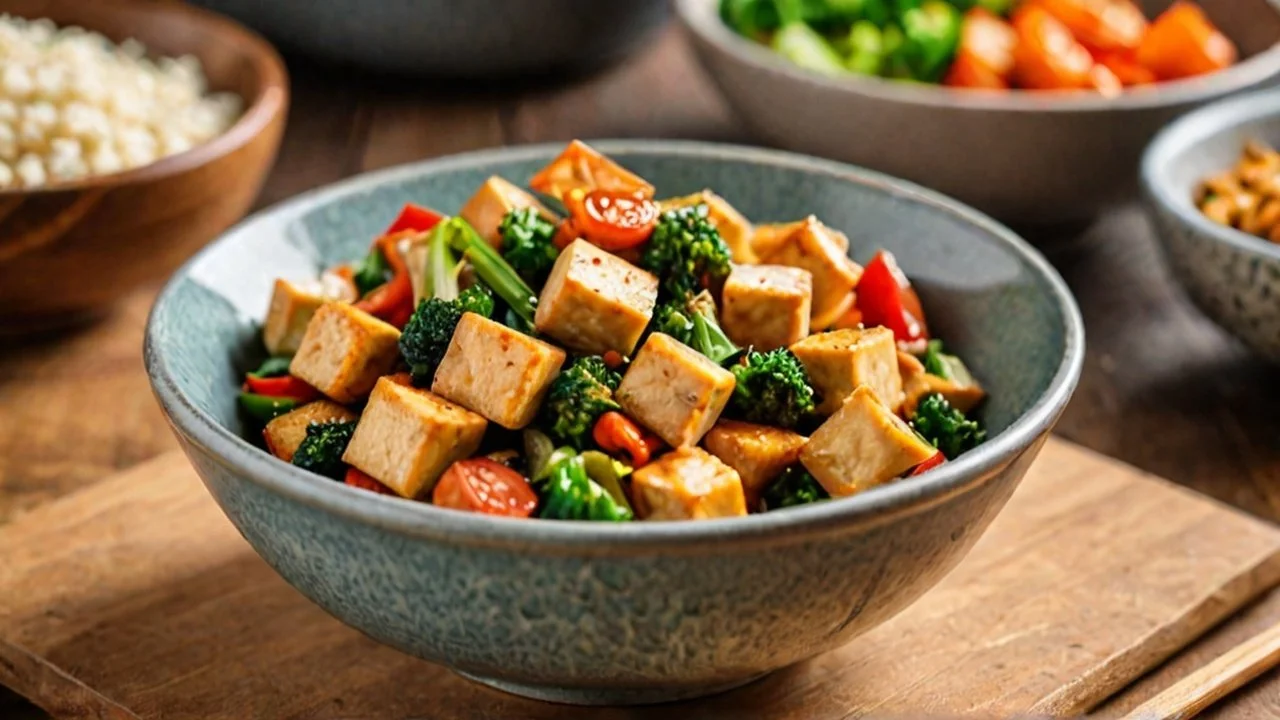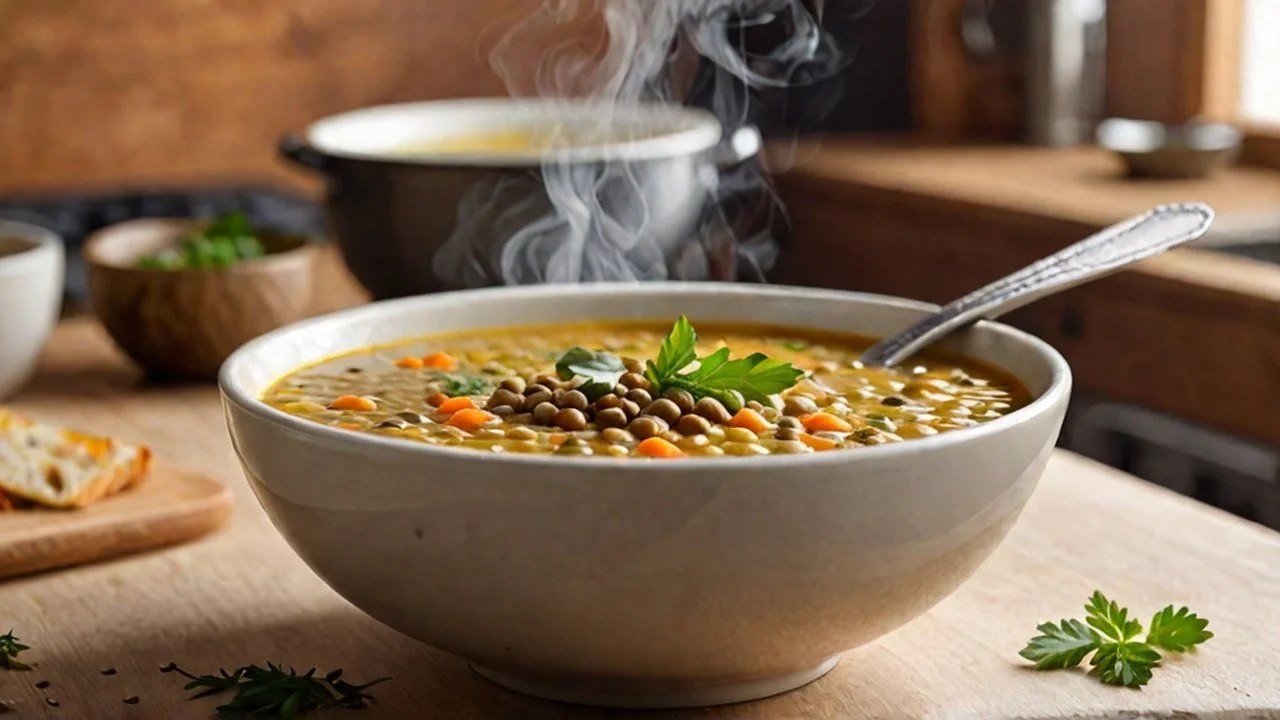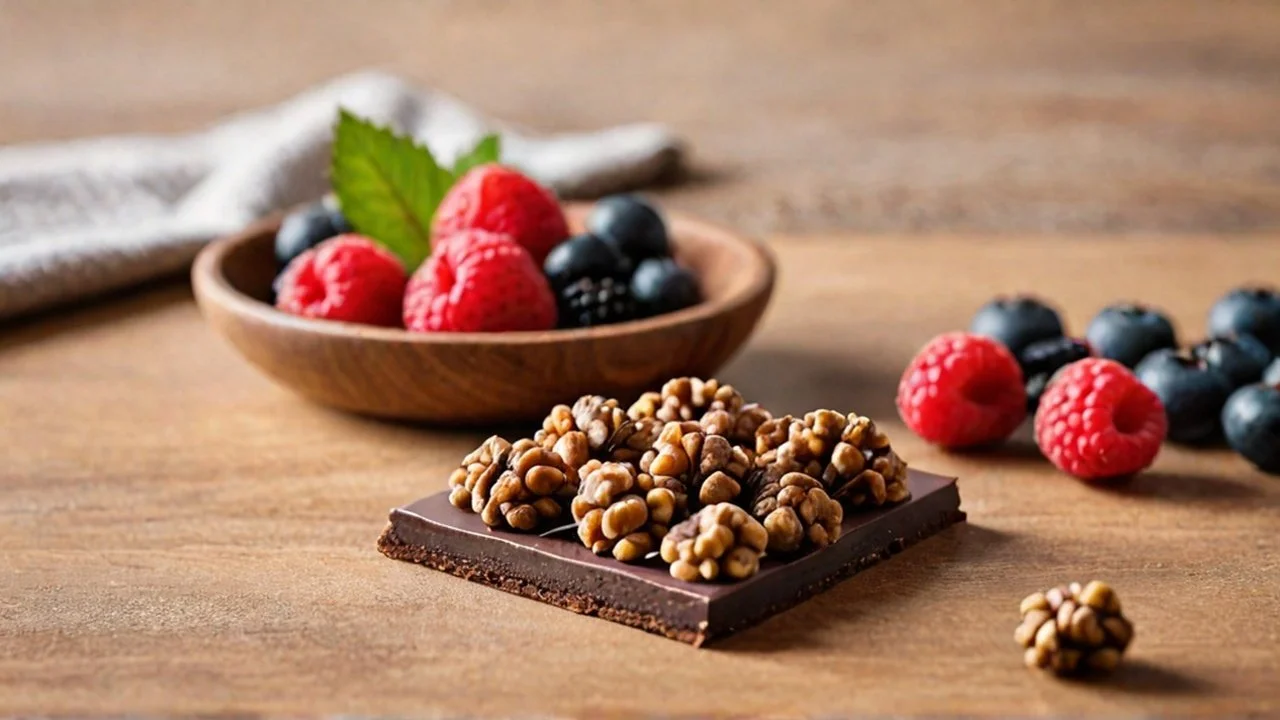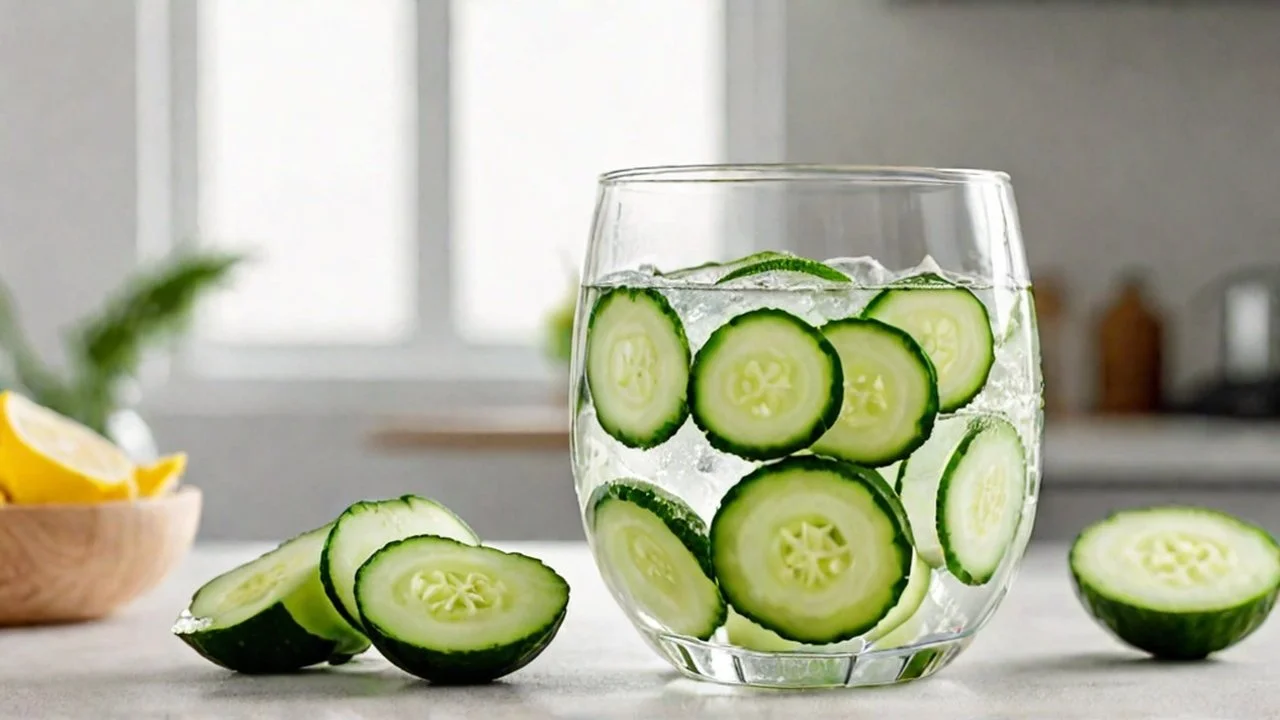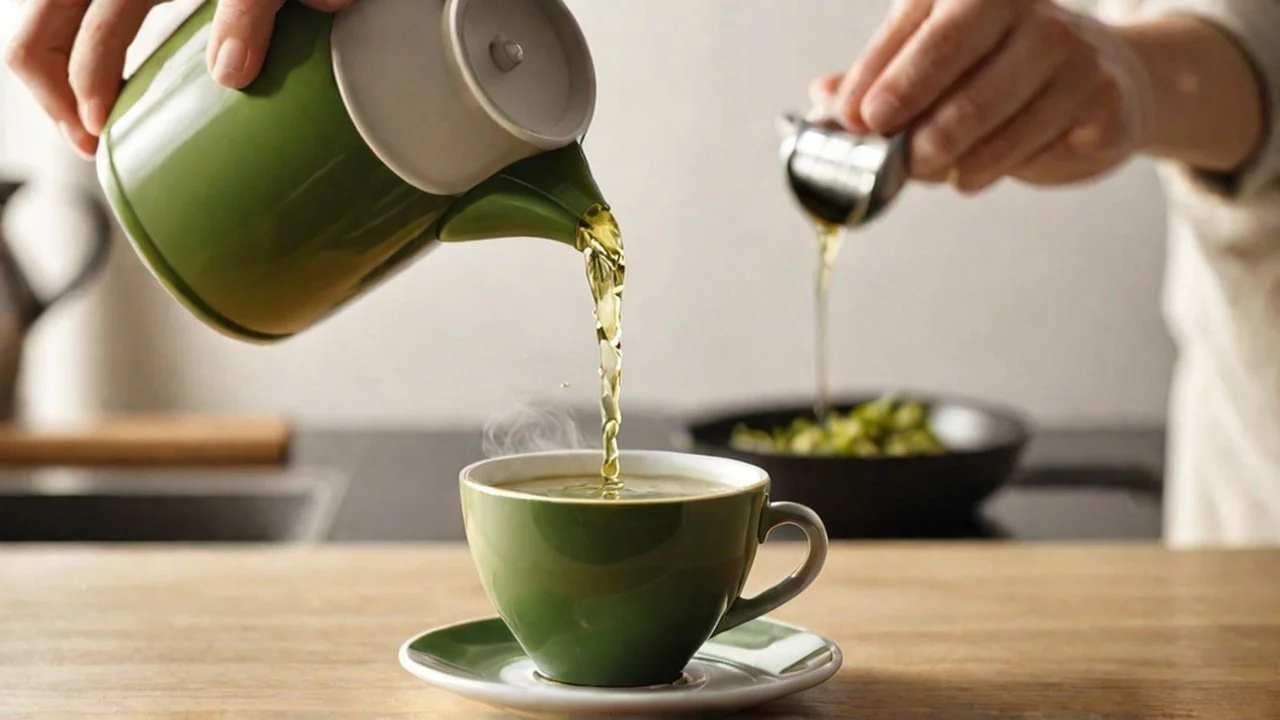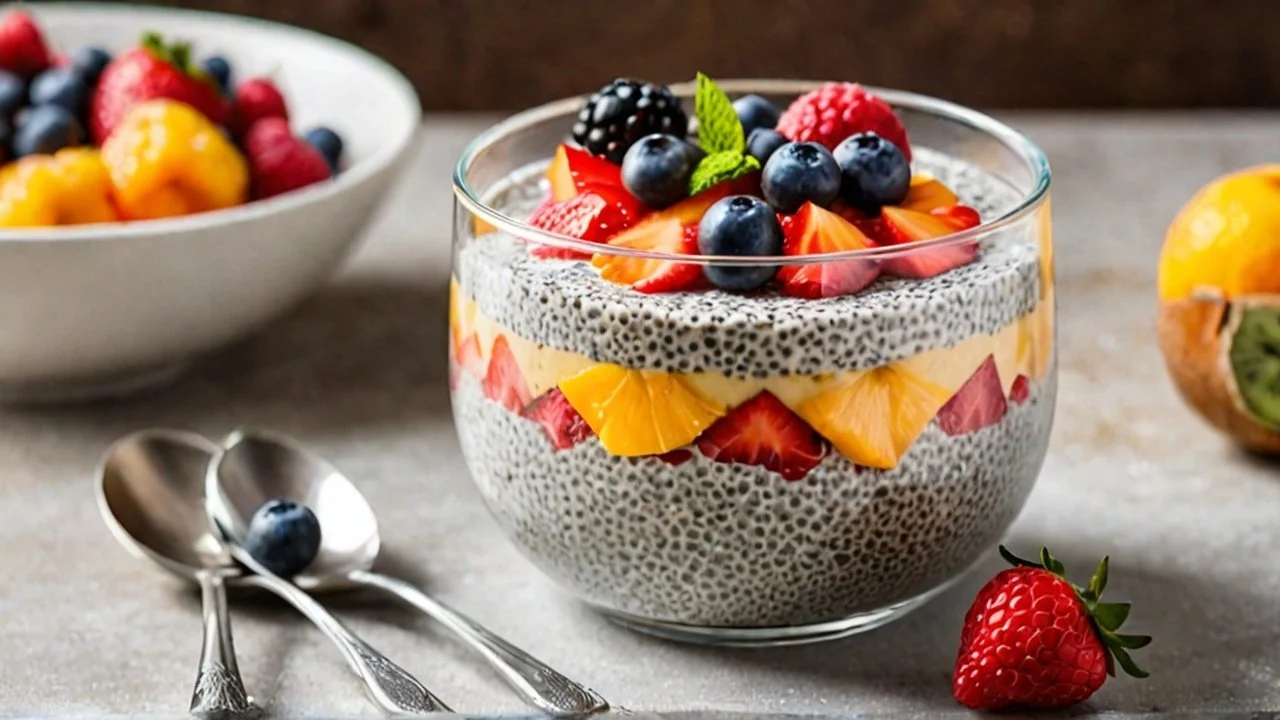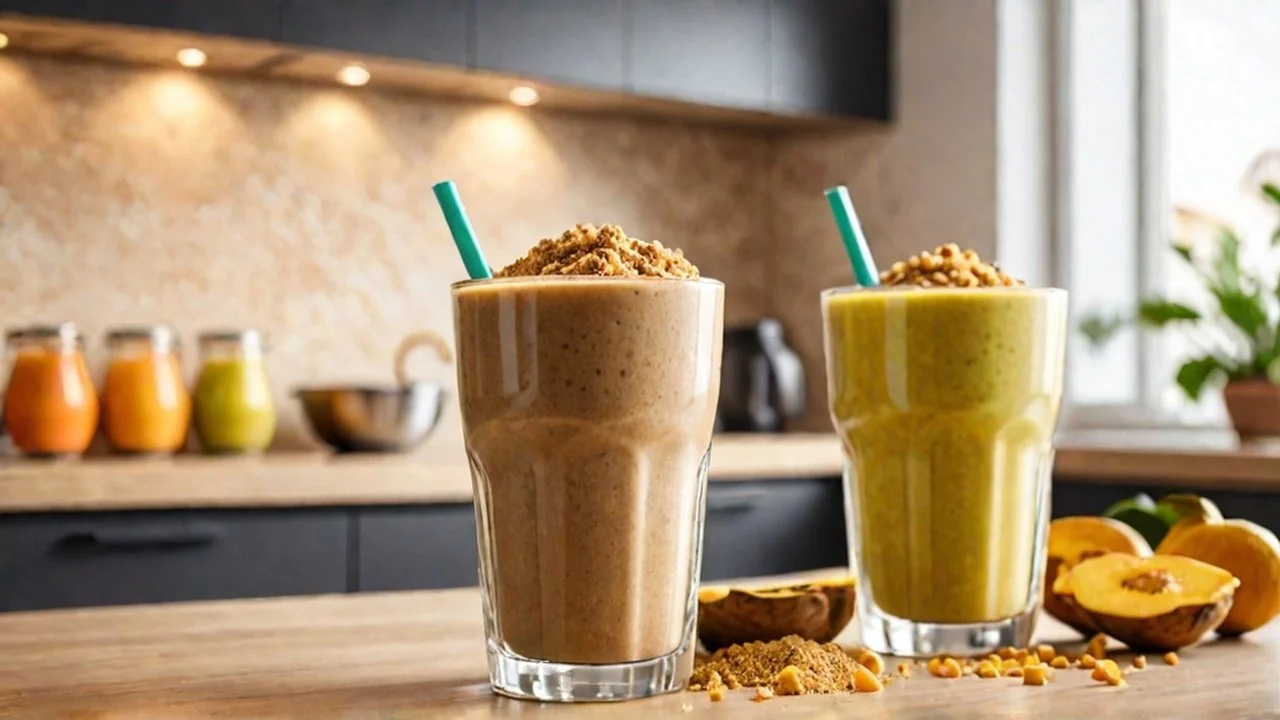Menopause: Metabolism Retired After 50? NOONE TOLD US ABOUT THIS!! WHAT TO DO!
MENOPAUSE, THE END OF AN ERA (AND THE START OF HOT FLASHES)
FREE BONUS RECIPES TO KICKSTART YOUR METABOLISM AND YES! YOUR LIBIDO INCLUDED. DOWNLOAD AND TRY THESE HEALTHY DELICIOUS FOODS!
So, menopause—let’s break it down. It’s like the season finale of Sex and the City, but for your ovaries. They’ve had a long run (about 40-ish years), and now they’re hanging up their boots and signing off. No more periods (yay!) but hello, hot flashes, weight gain, and some other fun surprises (boo).
When Does It All Start?
Typically, menopause kicks in between ages 45 and 55. But, just like waiting for your Uber driver who "will arrive in 2 minutes" for 10 minutes straight, it’s unpredictable. Some women experience perimenopause—the warm-up act—starting as early as their late 30s or early 40s. Perimenopause can last several years (because apparently, Mother Nature loves cliffhangers). It’s during this time that your hormone levels, especially estrogen, start to fluctuate like they’re on a rollercoaster.
Finally, menopause officially happens when you haven’t had a period for 12 consecutive months. Cue the confetti.
What Are the Symptoms?
Here’s the truth: menopause symptoms are like that “random” playlist that always plays the same song—annoying and unavoidable. The symptoms come in all shapes and sizes, but some of the most common ones are:
Hot Flashes: Imagine being stuck inside a sauna, but instead of relaxing, you’re just trying to get through a Zoom meeting.
Night Sweats: You fall asleep under your comfy duvet, only to wake up at 3 a.m. feeling like you’re trapped in the Sahara.
Mood Swings: Hormones in menopause have the emotional stability of a soap opera character. One minute you’re calm, and the next, you’re crying over a paper towel commercial.
Insomnia: Apparently, your body thinks that along with hormonal changes, you deserve some sleepless nights too.
Vaginal Dryness: Not exactly the kind of “dry” we want in life, but it’s there. Low estrogen can make things a little, well, less lubricated down there.
Brain Fog: Misplacing your keys for the third time today? Welcome to menopause brain, where every thought feels a little fuzzy. To lift brain fog and gain more mental clarity try this, it has "unusual neuro-nutrients" that evaporate brain fog, lift your mood, and support a healthy memory.
Weight Gain: Ah yes, the pièce de résistance of menopause. Your metabolism slows down like it’s on vacation, and that weight just seems to stick. A health gut means healthy microbiome,
The Weight Gain Struggle: Why Is It So Hard?
Here’s the kicker. Losing weight after menopause feels like trying to unlock your iPhone with wet fingers—frustrating and nearly impossible. There are a few reasons for this cruel twist:
Hormonal Changes: Your estrogen levels take a nosedive during menopause, and this hormone actually helps regulate body weight. Less estrogen = more fat storage, especially around the midsection. Yep, welcome to the belly fat club.
Metabolism Slowdown: The metabolic rate, which is how fast your body burns calories, slows down. You could be eating the same amount you did before, but suddenly it feels like every bite goes straight to your hips.
Muscle Loss: As we age, we naturally lose muscle mass, and muscles are calorie-burning machines. Less muscle means fewer calories burned, even at rest. Sigh.
Stress and Sleep: Menopause messes with your sleep, and poor sleep can increase levels of cortisol (the stress hormone). High cortisol levels encourage fat storage, particularly in the abdomen.
So, What’s the Solution?
Diet + Exercise = The Dynamic Duo
Here’s the truth: the best post-menopausal plan combines both diet and exercise. Let’s break it down:
Diet
First of all, forget the fad diets. You don’t need to go keto or drink celery juice until you turn green. What you do need is a balanced diet that works with your body, not against it.
Protein Power: After menopause, you lose muscle mass, so focus on protein. Protein helps build and maintain muscles. Think lean meats, eggs, beans, and tofu.
Fruits and Veggies: Yes, your mother was right all along. Load up on colorful, nutrient-dense fruits and vegetables that are low in calories but packed with vitamins and fiber. Superfoods like this are nutrient-dense packed with vitamins, minerals, and antioxidants that support overall health and wellness.
Healthy Fats: Avocados, nuts, seeds, and olive oil are your friends. These fats help regulate hormones and keep you fuller longer.
Whole Grains: Skip the white bread and pasta. Whole grains like quinoa, oats, and brown rice are fiber-rich and keep your blood sugar levels stable.
Hydration: Menopause can lead to bloating and water retention, so drink up. Water, that is. (Wine is fine, but maybe not every night.)
Exercise
Here’s a little secret: you can’t out-diet menopause weight gain. You need to exercise to burn those extra calories and maintain muscle mass. The best types of exercise for menopausal women are:
Strength Training: Lifting weights is one of the best things you can do post-menopause. Strength training boosts metabolism by building muscle, and it’s great for bone health, too. It doesn’t mean you have to start bench-pressing your couch, but resistance bands, dumbbells, or bodyweight exercises like squats are all good.
Cardio: Aerobic exercise helps burn calories and improve heart health. Walking, jogging, swimming, cycling—whatever gets you moving. Aim for at least 30 minutes of moderate activity most days of the week.
Yoga or Pilates: These are great for flexibility, balance, and stress relief. Bonus: they help with that pesky insomnia and reduce the cortisol levels caused by stress.
High-Intensity Interval Training (HIIT): If you’re up for it, HIIT is a time-efficient way to torch calories. Short bursts of intense exercise followed by periods of rest can help you burn fat more effectively.
Trending Menopause Conversations on Social
Menopause is no longer a hush-hush topic, and women are taking to social media to laugh, share, and commiserate. The #MenopauseMonday trend, for example, is filled with hilarious memes, supportive posts, and tips on managing symptoms. Expect phrases like "hot flash club," "menopausal warrior," and “moody AF” to flood your feed.
Final Thoughts
Menopause may feel like the ultimate betrayal from your body, but it doesn’t have to be all doom and gloom. With the right diet, exercise, and a solid sense of humor (which, let’s be real, is mandatory), you can tackle this new chapter with grace—and maybe a little sass.
So, cheers to aging like fine wine. Even if you’re sweating through your shirt while you do it.
Here's a funnier twist on menopause, with some added humor for each of those symptoms, along with natural remedies to help women manage them:
Metabolism Slowdown: So, your metabolism used to be a sprinter, but now it’s more like that one friend who swears they’re "on their way" but haven’t left the house yet. Suddenly, you’re gaining weight just by looking at a piece of cake. If you need a leg up or a little boost try this.
What to do: Spice up your life—literally! Add metabolism-boosting spices like cayenne, ginger, and cinnamon to your meals. Green tea is also a great metabolism booster. Also, build more muscle—because muscles burn calories even when you’re sitting around binge-watching Netflix.
Hot Flashes: Congratulations! Your internal thermostat has gone rogue. One minute you're feeling fine, and the next, you’re hotter than a jalapeño at a summer BBQ, fanning yourself like it’s your full-time job.
What to do: Keep cool with lightweight, breathable clothing. Sip on sage tea, which is known to reduce hot flashes, and stay hydrated with plenty of water (not wine… okay, maybe some wine). Carry a portable fan—because menopause is the only time when it’s totally acceptable to bring your own breeze wherever you go.
Insomnia and Constant Fatigue: Nothing says fun like tossing and turning all night, only to wake up feeling like a zombie who didn’t even get to star in The Walking Dead.
What to do: Try calming teas like chamomile or valerian root before bed, and practice yoga or meditation to help ease your mind. A regular sleep schedule can help too, but let’s be honest, it’s menopause—so “regular” is a loose term. Also, cut back on caffeine in the afternoon because insomnia doesn't need any help from your espresso habit.
Brain Fog: Remember when you could find your car keys in one go? Yeah, neither do we. Welcome to brain fog, where every day feels like a quiz show you’re losing.
What to do: Omega-3 fatty acids are great for brain health, so snack on some walnuts, flaxseeds, or oily fish. Puzzles, brain games, and learning something new can help keep your mind sharp—though, remembering where you put your phone is still a gamble.
Vaginal Dryness: There are many things in life that should be dry—your sense of humor, for example—but your vagina? Not so much. It’s like your body decided to swap out the moisturizer for sandpaper. Best Vaginal Probiotic.
What to do: Aloe vera and coconut oil are great natural lubricants that can provide relief. Staying hydrated and consuming more omega-3 fatty acids can help keep things a bit more comfortable down there. Also, flaxseeds and vitamin E are known for their moisture-boosting properties.
Decreased Libido: Your sex drive used to be a sports car, and now it’s more like a scooter that’s out of gas. You love your partner, but sometimes you’d rather nap than get frisky.
What to do: Ginseng and maca root are known for boosting libido naturally. Exercise and pelvic floor exercises (like Kegels) can also help increase blood flow and get things revved up again. A little romance doesn’t hurt either—so maybe light some candles and cue up your favorite pre-menopause playlist.
Final Thoughts on Surviving Menopause: Menopause may feel like an epic prank from Mother Nature, but you’ve got this. Incorporate natural remedies like eating healthy, exercising, and finding humor in the chaos. Don't forget the power of sleep (or at least trying to), essential oils for relaxation, and deep belly laughs—because let’s face it, sometimes the only thing left to do is laugh through the sweat.
And remember, you're not alone. Join the #HotFlashHustlers or #MoodyAF on social media, where women are sharing their journeys, tips, and—most importantly—memes to get through the menopausal madness together!
Here’s an expanded look at natural remedies, antidepressants, and foods that can help women manage menopause symptoms, boost energy, and improve skin health. Let's dive deeper into each area:
Natural Remedies for Menopause Symptoms:
Herbal Supplements for Hot Flashes & Mood Swings:
Black Cohosh: This popular herb has been used for years to reduce the frequency and intensity of hot flashes. It may also help with night sweats and irritability.
Red Clover: Rich in phytoestrogens (plant-based estrogens), red clover may help balance hormone levels and ease hot flashes.
Dong Quai: Often used in traditional Chinese medicine, this herb is thought to support hormonal balance and relieve menopause symptoms, particularly hot flashes and vaginal dryness.
St. John’s Wort: Known for its antidepressant qualities, St. John’s Wort can help with mild to moderate mood swings, anxiety, and depression associated with menopause.
Essential Oils for Insomnia and Relaxation:
Lavender Oil: A powerful natural remedy for insomnia and stress, lavender oil can help calm the mind and improve sleep. You can add a few drops to your pillow, diffuse it in your room, or use it in a soothing bath before bed.
Clary Sage Oil: Known for balancing hormones, clary sage can be used to reduce stress and help with hot flashes. Try massaging a few drops mixed with a carrier oil (like coconut or almond oil) onto your wrists or feet before bedtime.
Natural Lubricants for Vaginal Dryness:
Coconut Oil: This is a safe, gentle, and natural lubricant. It’s antimicrobial and moisturizing, making it a great choice for sensitive areas.
Aloe Vera Gel: Known for its soothing and hydrating properties, aloe vera can also be used as a natural remedy for vaginal dryness. Just make sure it’s 100% pure aloe without additives.
Vitamin E Suppositories: These can be used to moisturize and relieve dryness from the inside out.
Natural Antidepressants and Foods for Mood and Energy:
Omega-3 Fatty Acids (For Mood and Brain Health):
Fish (Salmon, Sardines, Mackerel): Rich in omega-3s, these fatty acids help regulate mood and improve brain function. They may help with memory issues and reduce feelings of depression or anxiety.
Flaxseeds and Chia Seeds: For a plant-based source of omega-3s, add these seeds to smoothies, yogurt, or salads.
Walnuts: These are another great source of omega-3 fatty acids and can be a quick snack to boost mood and brain power.
Tryptophan-Rich Foods (For Serotonin Boosting):
Turkey: You know that post-Thanksgiving sleepiness? That’s tryptophan at work. This amino acid helps the body produce serotonin, the “feel-good” hormone, improving mood and promoting better sleep.
Bananas: These are rich in tryptophan and vitamin B6, which are essential for serotonin production.
Pumpkin Seeds: A great source of tryptophan and magnesium, which is known to relax the body and improve mood.
Magnesium-Rich Foods (For Relaxation and Sleep):
Leafy Greens (Spinach, Kale): Magnesium is often referred to as the “relaxation mineral” because it helps soothe muscles, reduce anxiety, and promote better sleep.
Dark Chocolate (at least 70% cacao): Good news! A moderate amount of dark chocolate is a rich source of magnesium and antioxidants, which can improve mood and reduce stress.
Avocados: These are full of healthy fats, potassium, and magnesium, making them excellent for energy, mood stabilization, and skin hydration.
Probiotics for Gut Health (For Mood and Immunity):
Yogurt, Kefir, and Fermented Foods: A healthy gut can lead to better mood regulation since the gut produces a significant amount of serotonin. Including probiotics from fermented foods can help keep your gut and mood in balance.
Adaptogens for Stress and Energy:
Ashwagandha: This adaptogenic herb helps the body cope with stress, improves energy levels, and reduces feelings of anxiety.
Rhodiola Rosea: Another adaptogen, Rhodiola, helps reduce fatigue and improves mental clarity and resilience to stress.
Foods for Crepey Skin and Skin Elasticity:
Collagen-Boosting Foods:
Bone Broth: Rich in collagen, bone broth is a fantastic way to support skin elasticity and prevent crepey skin.
Citrus Fruits (Oranges, Lemons, Grapefruits): These are high in vitamin C, which is essential for collagen production, keeping your skin firm and glowing.
Berries (Strawberries, Blueberries): These are packed with antioxidants, which help fight free radicals that damage skin cells, slowing the aging process.
Antioxidant-Rich Foods (To Combat Aging and Improve Skin Health):
Tomatoes: High in lycopene, a powerful antioxidant, tomatoes help protect skin from sun damage and improve its elasticity.
Carrots and Sweet Potatoes: These are loaded with beta-carotene, which helps repair damaged skin cells and improve overall skin tone.
Green Tea: A potent source of antioxidants, green tea can help protect the skin from aging and support hydration.
Healthy Fats (For Skin Hydration and Glow):
Avocados: These are packed with healthy fats, vitamins C and E, and antioxidants that deeply moisturize and protect the skin.
Nuts and Seeds (Almonds, Flaxseeds): Rich in vitamin E, these are essential for skin repair and hydration, making the skin look more plump and youthful.
Hydration Heroes (For Plump and Moisturized Skin):
Cucumber: With a high water content, cucumbers help keep the skin hydrated from the inside out.
Watermelon: Another hydrating fruit, watermelon is full of vitamins A, B6, and C, which help maintain skin elasticity and reduce the appearance of wrinkles.
Final Tips for Menopausal Skin and Energy:
Exercise: Incorporate strength training to boost collagen production and help fight the sagging effects of crepey skin. Give this a try and get rid of crepey skin. Plus, exercise increases energy and improves mood.
Stay Hydrated: Drinking enough water throughout the day keeps your skin hydrated and can reduce the appearance of wrinkles and dryness.
Sleep: Aim for quality sleep. Sleep is the time when your skin repairs itself, so managing insomnia with natural remedies like chamomile tea, magnesium supplements, and a good bedtime routine is crucial.
By combining a healthy diet, exercise, and natural remedies, women can tackle menopause symptoms while feeling energized, looking radiant, and maintaining a sense of humor. Would you like more specific recipes or tips for any of these remedies.
Here are some specific recipes incorporating natural remedies and ingredients to manage menopause symptoms, boost energy, and improve skin health:
BONUS: FREE RECIPES FOR A SLOW METABOLISM DURING MENOPAUSE
1. Metabolism-Boosting Smoothie
This smoothie is packed with metabolism-boosting ingredients like ginger and green tea.
Ingredients:
1 cup green tea (chilled)
½ inch fresh ginger (grated)
½ teaspoon cinnamon
1 tablespoon flaxseeds (for omega-3s)
½ cup berries (antioxidants for skin health)
1 banana (energy boost)
1 tablespoon chia seeds (plant-based omega-3s)
1 tablespoon honey (optional)
Ice cubes
Instructions:
Brew green tea and let it chill.
Add all ingredients to a blender and blend until smooth.
Serve cold.
2. Sage Tea for Hot Flashes
Sage has been shown to reduce the frequency of hot flashes.
Ingredients:
1 tablespoon dried sage (or 1 fresh sprig)
1 cup hot water
Honey and lemon (optional)
Instructions:
Steep the sage in hot water for 5-10 minutes. Best tea Pots
Strain and sweeten with honey and lemon, if desired.
Sip throughout the day to help reduce hot flashes.
3. Omega-3 Power Salad
This salad is packed with omega-3-rich ingredients that support brain health and skin elasticity.
Ingredients:
2 cups spinach (magnesium-rich for relaxation)
½ avocado (healthy fats for skin)
1 tablespoon flaxseeds (omega-3s)
1 tablespoon chia seeds
1 grilled salmon fillet (omega-3s)
1 tablespoon olive oil
1 teaspoon lemon juice
Salt and pepper to taste
Instructions:
Assemble spinach, avocado, and salmon in a bowl.
Sprinkle flaxseeds and chia seeds over the top.
Drizzle with olive oil and lemon juice.
Toss and season with salt and pepper.
4. Bone Broth Collagen Soup
For crepey skin and skin elasticity, bone broth provides essential collagen.
Ingredients:
4 cups bone broth (chicken or beef)
1 carrot (beta-carotene for skin repair)
1 celery stalk
½ teaspoon turmeric (anti-inflammatory)
1 tablespoon coconut oil (hydration for skin)
Salt and pepper to taste
Instructions:
Heat bone broth in a pot over medium heat.
Add chopped carrot, celery, and turmeric.
Simmer for 20 minutes, then blend with coconut oil until smooth.
Serve warm.
5. Dark Chocolate Magnesium Bites
These tasty bites are a great way to get magnesium for relaxation and better sleep.
Ingredients:
1 cup dark chocolate (70% cacao or higher)
½ cup chopped almonds (magnesium-rich)
1 tablespoon flaxseeds (omega-3s)
1 tablespoon chia seeds
1 tablespoon coconut oil
Instructions:
Melt dark chocolate with coconut oil in a microwave or double boiler.
Stir in almonds, flaxseeds, and chia seeds.
Pour mixture into silicone molds or a lined baking dish.
Refrigerate until set. Break into pieces or pop out from molds.
These recipes combine ingredients to help manage menopause symptoms while supporting overall wellness.
Here are some more specific tips and recipes focused on boosting energy, skin health, and managing common menopause symptoms like brain fog and low libido.
1. Energy-Boosting Chia Pudding
This chia pudding is packed with omega-3s, fiber, and magnesium to provide sustained energy throughout the day.
Ingredients:
3 tablespoons chia seeds
1 cup almond milk (or any plant-based milk)
1 tablespoon maple syrup or honey
½ teaspoon vanilla extract
½ cup fresh berries (rich in antioxidants)
1 tablespoon pumpkin seeds (for extra magnesium and zinc)
Instructions:
In a bowl or mason jar, combine chia seeds, almond milk, maple syrup, and vanilla extract.
Stir well, then let sit for 5 minutes. Stir again to prevent clumping.
Refrigerate for at least 2 hours or overnight.
Before serving, top with fresh berries and pumpkin seeds for an extra nutrient boost.
Tip: Chia seeds are rich in omega-3 fatty acids, which improve brain health and mood. The fiber in chia seeds also helps to regulate blood sugar, keeping energy levels stable.
2. Brain Fog-Busting Omega-3 Snack
Walnuts and dark chocolate make for a delicious snack to fight brain fog and boost cognitive function.
Ingredients:
¼ cup raw walnuts (omega-3s for brain health)
1 ounce dark chocolate (at least 70% cacao)
1 tablespoon dried blueberries (antioxidants for brain function)
Instructions:
Chop the dark chocolate into small pieces.
Mix walnuts, dark chocolate, and dried blueberries in a small bowl.
Enjoy this snack mid-morning or mid-afternoon to beat brain fog.
Tip: Dark chocolate contains flavonoids that can improve memory and mood, while the omega-3s in walnuts support cognitive function.
3. Libido-Boosting Smoothie
This smoothie combines maca root, a natural libido enhancer, with mood-boosting ingredients like cacao and avocado.
Ingredients:
1 teaspoon maca root powder (natural libido booster)
1 tablespoon raw cacao powder (mood-boosting antioxidants)
½ avocado (healthy fats for skin and hormone health)
1 banana (rich in potassium for energy)
1 cup almond milk
1 tablespoon honey or maple syrup (optional)
Ice cubes
Instructions:
Combine all ingredients in a blender.
Blend until smooth and creamy.
Serve immediately.
Tip: Maca root is known to enhance libido and hormone balance, while cacao contains mood-enhancing compounds to reduce stress.
4. Collagen-Boosting Citrus Smoothie for Crepey Skin
This vitamin C-packed smoothie supports collagen production, which is essential for maintaining skin elasticity and reducing the appearance of wrinkles.
Ingredients:
1 orange, peeled (vitamin C for collagen production)
½ lemon (vitamin C and detoxifying)
1 cup spinach (rich in antioxidants and magnesium)
1 tablespoon chia seeds (omega-3s for skin hydration)
1 tablespoon collagen powder (optional for extra skin support)
1 cup coconut water (hydration)
Instructions:
Combine all ingredients in a blender and blend until smooth.
Serve chilled for a refreshing skin-boosting treat.
Tip: Vitamin C is crucial for collagen production, which helps prevent skin sagging and dryness. Adding collagen powder can further support skin elasticity.
5. Hormone-Balancing Sweet Potato & Quinoa Salad
Sweet potatoes are rich in beta-carotene, which supports skin health, and quinoa provides a good source of plant protein and fiber to keep energy levels stable.
Ingredients:
1 cup cooked quinoa
1 medium roasted sweet potato (beta-carotene for skin)
1 cup kale or spinach (rich in magnesium)
2 tablespoons pumpkin seeds (zinc for hormone balance)
1 tablespoon olive oil (healthy fats for skin hydration)
1 tablespoon lemon juice (for a vitamin C boost)
Salt and pepper to taste
Instructions:
Roast the sweet potato in the oven at 400°F (200°C) for 20-25 minutes or until tender.
In a large bowl, combine the cooked quinoa, roasted sweet potato, kale, and pumpkin seeds.
Drizzle with olive oil and lemon juice, then season with salt and pepper.
Toss everything together and serve warm or cold.
Tip: Pumpkin seeds are high in zinc, which is essential for hormone regulation and skin health. The combination of quinoa and sweet potato provides long-lasting energy.
6. Hydration Hero Cucumber & Mint Infused Water
Staying hydrated is key for combating dry skin and boosting energy. This refreshing cucumber and mint water helps keep you hydrated while providing a subtle flavor.
Ingredients:
½ cucumber, thinly sliced
1 handful fresh mint leaves
1 lemon, thinly sliced
1 liter of water
Instructions:
Add cucumber, mint, and lemon slices to a pitcher of water.
Let the water infuse in the fridge for 1-2 hours.
Sip throughout the day for a refreshing, hydrating drink.
Tip: Cucumbers are high in water content and vitamins that hydrate the skin from within, while mint can help with digestion and reduce bloating.
7. Calming Lavender Chamomile Tea for Better Sleep
Chamomile is known for its calming properties, while lavender helps reduce stress and anxiety, making this the perfect bedtime tea for insomnia.
Ingredients:
1 tablespoon dried chamomile flowers
1 teaspoon dried lavender buds
1 cup boiling water
Honey (optional for sweetness)
Instructions:
Combine chamomile and lavender in a tea infuser or directly in the cup.
Pour boiling water over the herbs and let steep for 5-10 minutes.
Remove the herbs and sweeten with honey if desired.
Sip before bed to promote relaxation and sleep.
Tip: Lavender and chamomile are natural sleep aids that can reduce anxiety and improve sleep quality.
Purchases made on this site may result in a commission paid to me.
If you're looking for hot topics and search terms to make this menopause conversation trend, think:
"Best diets for menopause weight loss"
"Why is it hard to lose weight after menopause?"
"How to get rid of belly fat after 50"
"Perimenopause vs. menopause symptoms"
"Menopause and metabolism slowdown"
"Best exercises for menopausal women"
"How to deal with hot flashes at night"




